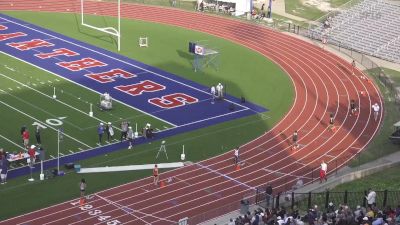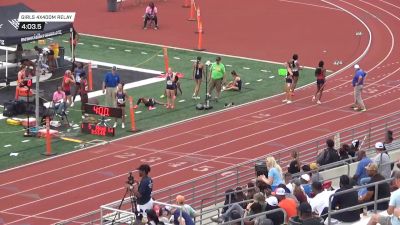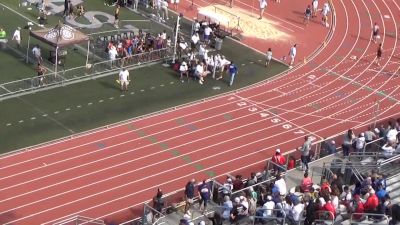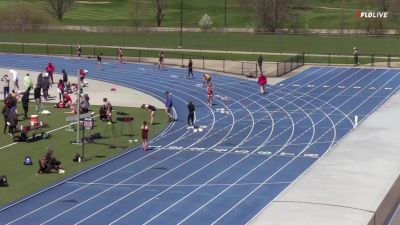Flotrack presents FloRatings
Flotrack presents FloRatings

The beautiful thing about cross country is that it’s not necessarily about time, but about place. You may run a slow time, but as long as you finish in front of your competitors, that’s all that truly matters. Personal bests and times are subjective to many qualitative conditions on that particular day of the race.
How difficult was the course compared to others? What was the weather like that morning? What was the overall quality of the field?
What if I told you that although these factors have no value, meaning could be drawn from them?
Flotrack is proud to release FloRatings. FloRatings is a universal ranking system for all cross country races and courses.
FloRatings are values that compare how fast runners have run relative to each other. The qualitative factors are taken into account, but the calculation of the ratings are based on the time difference between each runner in each race.
The rating system is based on a scale that is generally between 0 and 230. However, athletes that run exceptionally fast or slow may exceed those limitations.
While FloRatings compare runners to runners, the value will allow athletes and fans to compare runners' capabilities to various cross country courses. It’s impossible to run both the Stanford Invitational and the Minnesota Roy Griak Invitational because they’re on the same day. FloRatings will allow athletes to apply their ratings to other races and see where they would have finished in regards to the rest of the field.
It’s a universal rating system that is accurate, but not precise.
It’s not a system of who is better than whom, but rather, who has run faster than whom.
The FloRatings system is based on the design created by Bill Meylan at tullyrunners.com for high school competitions. Meylan has been creating Speed Ratings for over a decade and has a loyal fan base in New York. We thank Bill Meylan for his incredible contribution to this project.
The formula for FloRating is based on linear regression models that have been applied to each race. The information collected from the models is used to adapt the formula to that specific race on each course.
In order to evaluate each cross course course, "speed profiles" were created based on the last four years of races on the respective course. The data gathered from each race resulted in the creation of a "course conversion table" that was used as a guideline to examine the level of difficulty of each course and remove outliers (ie: weather, quality of the fields) in the future.
The table is simply a range of how many seconds faster or slower a certain cross country course is compared to our "baseline" course. Even though the entire system is intertwined, there is one course that was rated with no conversion factor.
Although the graphical method is accurate, the FloRating for each race is not complete. There are two more methods used to help perfect the rating for each race: the use of “reference runners” and classifying each course on a graded scale.
The “reference” runners refer to runners who are used to adjust overall course ratings according to their previous races. Some runners remain consistent throughout the season and can be used to discover abnormalities when determining course ratings.
For example, the course at Pennsylvania State University is 0.2 miles longer than 5.0 miles. The FloRatings for this course need to be adjusted via the course conversion table to create a more consistent value. Therefore, “reference runners” are used as a guide to alter the course conversion factor to match their racing patterns.
The second method to adjust course conversion factors is to determine the quality of the field. For the most part, the quality of major races in NCAA are relatively the same. However, some races such as the NCAA Cross Country Championships, have a more quality field than other lesser known invitationals.
Each course is then categorized into “A,” “B,” “C,” and “D” races. Each letter is then divided into pluses and minus depending on the unscaled speed rating. The method that determines whether a course is given a “+” or a “-” is based on the rating for the “reference runners” that appear in the race. The difference in grade is corresponds to how much of a handicap is required to properly rate the race.
Below are the FloRatings for Arizona junior Lawi Lalang.
| Place | Time in Seconds | Time | Name | School | FloRating | Race |
| 1 | 1724 | 28:44.1 | Lawi Lalang | Arizona | 235.3 | NCAA Nationals |
| 1 | 1396 | 23:15.5 | Lawi Lalang | Arizona | 228 | Roy Griak |
| 1 | 1391 | 23:10.8 | Lawi Lalang | Arizona | 224.2 | Wisconsin Invitational |
| 1 | 1714 | 28:34 | Lawi Lalang | Arizona | 223.6 | West Regional |
If we use Lalang as a case example, we can see a trend among his finishing place, time, and FloRating. For example, even though he ran five seconds faster at the Wisconsin Invitational than Roy Griak, his speed rating is four points higher at Roy Griak. This is because the course at Roy Griak was more difficult, as determined by the data gathered from both race results.
FloRatings and You
FloRatings will be compiled for as many major NCAA races as possible. Due to time constraints, some races may be overlooked, but there should be a general picture one can assume for cross country based on the FloRatings.
FloRatings are approximate measurements meant to universalize cross country races. When runners discuss their personal bests on the track, those are absolute values. Regardless of conditions, each track has some the same degree of difficulty. FloRatings are meant to create the same leader board used for track and field in cross country.
2012 FloRatings:
October 2nd Release
October 16th Release
October 30th Release
November 13th Release
November 20th Release
Listed below are two lists (men and women) that are a compilation of all the races that have been rated from 2011. The races that have been rated include:
Overall FloRatings 2011: Men / Women
Wisconsin Invitational: Men / Women
Cowboy Jamboree: Men / Women
Roy Griak: Men / Women
Louisville Classic: Men / Women
Bill Dellinger: Men / Women
Stanford Invitational: Men / Women
Notre Dame Invitational: Men / Women
Paul Short Invitational: Men / Women
Pre-Nationals 2011: Men / Women
Northeast Regional: Men / Women
Southeast Regional: Men / Women
Midwest Regional: Men / Women
South Central Regional: Men / Women
South Regional: Men / Women
Mountain Regional: Men / Women
Great Lakes Regional: Men / Women
Mid-Atlantic Regional: Men / Women
West Regional: Men / Women
NCAA Nationals: Men / Women
Related Content
 Jasmine Camacho-Quinn Ready To Get Back In The Lab After Meet Record Win In Xiamen
Jasmine Camacho-Quinn Ready To Get Back In The Lab After Meet Record Win In XiamenApr 20, 2024
 London Marathon Map: Here's The 2024 Route
London Marathon Map: Here's The 2024 RouteApr 20, 2024
 London Marathon 2024 Elite Field: Here's The Full List
London Marathon 2024 Elite Field: Here's The Full ListApr 20, 2024
 Replay: UIL Region 1-4A and Region 1-5A | Apr 19 @ 10 AM
Replay: UIL Region 1-4A and Region 1-5A | Apr 19 @ 10 AMApr 20, 2024
 Replay: UIL Region 2-6A Region 3-3A | Apr 19 @ 4 PM
Replay: UIL Region 2-6A Region 3-3A | Apr 19 @ 4 PMApr 20, 2024
 Replay: UIL Region 3-5A and Region 3-6A | Apr 19 @ 9 AM
Replay: UIL Region 3-5A and Region 3-6A | Apr 19 @ 9 AMApr 20, 2024
 Replay: UIL Region 4-5A and Region 4-6A | Apr 19 @ 3 PM
Replay: UIL Region 4-5A and Region 4-6A | Apr 19 @ 3 PMApr 19, 2024
 How to Watch: 2024 MHSAA Outdoor Championships | 1A/3A | Track and Field
How to Watch: 2024 MHSAA Outdoor Championships | 1A/3A | Track and FieldApr 19, 2024
 Replay: AI Owens Classic | Apr 19 @ 11 AM
Replay: AI Owens Classic | Apr 19 @ 11 AMApr 19, 2024